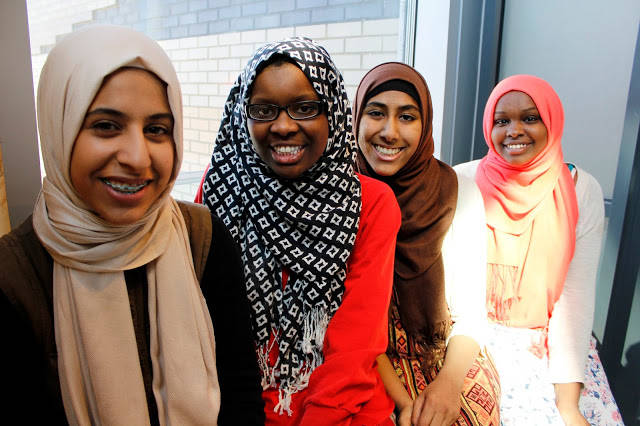Keeping America Great
We live in Vermont, bluest state in the nation, in the part of the state – greater Burlington -- that is home to Bernie Sanders and that voted overwhelmingly for Hillary Clinton against Trump. The local political culture often defies national patterns. Here, Bernie gets attacked from the left as a war criminal and corporate lackey. The newly elected Republican governor has distanced himself from Trump and vowed to resist the administration’s refugee and immigration ban. So too have a number of other state officials, including Burlington’s chief of police, citing his sworn duty to defend and uphold the U.S. Constitution. Chief Brandon del Pozo, a former New York City cop reared in Bensonhurst, is Jewish and Cuban but commonly mistaken for Italian. At an inauguration day teach-in at the University of Vermont, chief del Pozo highlighted his efforts to diversify his department through targeted recruiting in the city’s immigrant neighborhoods. He has a particular candidate in mind, a young Somali man with a good feel for the streets, a mature and steady temperament, and a passion for service to the community.
Feeling at home in multi-ethnic Burlington, VT
Much of the ethnic and national diversity that exists in Burlington comes from its refugee resettlement populations of Vietnamese, Bosnians, Bhutanese, Congolese, Rwandans, Sudanese, Somalis, and others. UVM and several other area colleges add a modest number of U.S. people of color and foreign nationals to the demographic mix. The same progressive attitude and missionary impulse behind Burlington’s officially welcoming posture toward refugees might also explain its high incidence of international and interracial adoption; remarkably, in spite of being one of the country’s whitest states, Vermont has the highest percentage of multi-racial families in the nation. My own family promotes local diversity in several of these ways. My wife, Emily Bernard, is African American. We adopted our daughters, Giulia and Isabella, in Ethiopia ten years ago. My teaching and scholarship focus on ethnic and racial edges and contact zones, especially the intersections and overlaps between Italian American and African American culture. Emily, also a UVM professor, is a noted Harlem Renaissance scholar and writes beautifully about interracial friendship.
For me, Burlington felt like home just as soon as my wife and I moved here in 2001. I grew up a morning’s drive away in a small town in western Massachusetts, close enough so that when we moved into our first Vermont house, my parents came up to help me put in tomato plants, stock our refrigerator with salami and cheese, and roll a few batches of fresh pasta. New England whiteness is deeply familiar to me—both the ethnic working-class tradespeople who remind me of the construction workers, plumbers, electricians, and welders (my father’s trade) on both sides of my family, and the WASP elites, like the Berkshire gentry whose draperies were sown by my mother, a skill she’d honed as a teenager working in a northern New Jersey textile factory with fellow Italian American women. Familiar, too, is the texture and rhythm of everyday life: the weather, the sports rivalries, the beers, the sound of radio and TV broadcasters’ voices.
Leave or stay?
Emily grew up in black middle-class Nashville nursing a romantic vision of this region: the New England of fiery Puritan preachers and righteous abolitionists, the literary culture of Melville, Hawthorne, James, and Wharton. She loves old farmhouses and churches and has a special fascination with the region’s oldest cemeteries – those beautifully morbid tombstones sticking out from weeds just off the side of the road, so much more organic than the over-cultivated, ornately gated spaces of the New South. And yet, for all of her Yankee Gothic romanticism, Emily struggles mightily to claim this place as her own, to feel that she belongs here. Like many of our non-white friends, colleagues, and students, she is both invisible and over-visible. When we visit her brothers in Brooklyn, or just walk the streets in Montreal (90 miles north of Burlington), Emily is noticeably more relaxed, looser, freer.
Rare is the week that passes without Emily telling me that we need to think about moving to a place with more people of color and a deep history of multi-racialism (however messy), not just a fashionable rhetoric of “diversity.” Equally rare is the week when Emily doesn’t redouble her commitment to staying and fighting for a better Vermont. “Can I make a home here?” Emily writes in her forthcoming book, Black is the Body. “Every day for the last fifteen years, the question has tagged along with me. My daughters’ bus driver and I trade book recommendations in the morning as the girls clomp up the stairs to their seats: Stay. In the parking lot of the grocery store, a white man with a slick bald head looks at me, my license plate, and then shakes his head in disgust. Leave.”
Much of our daily life – as colleagues in UVM’s program in Critical Race and Ethnic Studies, mentors to students of color and their white allies, parents actively involved in our children’s elementary school, members of our Lutheran church’s social justice committee and of an informal social group of multi-racial families – involves engaging with people who are the face of a new and changing Vermont. One of the reasons “stay” continues to win out is the bracing example of the newest Americans in our community, especially the younger generation, our daughter’s age and older, who are proud to be Vermonters and insist that Vermonters recognize them as their own.
Keeping America Great
We’ve found special inspiration in “Muslim Girls Making Change,” a group of local high school students who perform social justice-themed spoken word slam poetry in venues across the state and have won both national and international acclaim. These are vibrant, academically serious young women, and I wouldn’t be surprised to find out a decade from now that one of them had graduated from medical school and joined the thousands of Muslim doctors (and the more than 10,000 licensed physicians in the U.S. who graduated from medical school in the seven countries named in the president’s travel ban) who work in underserved areas of our country. They are also American teenage girls, and when they visited our home last fall they spent the evening gabbing with Giulia and Isabella about the excellence of Snapchat and Taylor Swift and the deficiencies of the local malls.
As the Trump administration now moves quickly—if with stunning incompetence—to enact its Islamophobic agenda, I still don’t know how to answer the question my daughters posed on that dreaded morning last November. But I do know this: in defiance of Trump and everything he and his supporters believe and stand for, here in Vermont it is our Muslim neighbors who are keeping America great and making us feel right at home.
* John Gennari is an American Studies-trained U.S. cultural historian at the University of Vermont. He specializes in different aspects of race and ethnic studies and Italian American cultural studies. Dr. Gennari has written several books and essays, including his forthcoming Flavor and Soul: Italian America at its African American Edge (University of Chicago Press, April 2017).



































i-Italy
Facebook
Google+
This work may not be reproduced, in whole or in part, without prior written permission.
Questo lavoro non può essere riprodotto, in tutto o in parte, senza permesso scritto.